Walgreens is Realty Income’s largest client at 3.9% of Annualized Contractual Rent. Realty Income
The stock market (as measured by the S&P 500) has been strong this year (up over 15%), but if you strip out the “Magnificent 7” mega-cap stocks, the rest of the market has largely struggled. And that includes REITs in general, as well as popular monthly-dividend REIT, Realty Income (NYSE:O), in particular (down more than 15% this year). In this report, we compare Realty Income to over 100 big-yield REITs (sorted by REIT industry), and then review Realty Income’s business strategy (i.e. growth through acquisition), big macroeconomic and secular headwinds, dividend safety, valuation and risks. We conclude with our strong opinion on investing.

Realty Income
Overview
Realty Income, also known as “The Monthly Dividend Company,” is a real estate investment trust (“REIT”) that has paid monthly dividends for over 54 years. And the dividend has steadily grown over time. The company generates cash flow from over 13,250 properties, mostly owned under long-term net lease agreements with commercial (mainly retail) clients. For reference, here is a look at Realty Income’s top 20 clients:

Realty Income Investor Presentation
100 Big-Yield REITs, Compared:
Before diving deeper into Realty Income in particular, it’s worth stepping back and considering Real Estate Investment Trusts (“REITs”) in general. As you likely already know, to qualify as a REIT:
“a company must have the bulk of its assets and income connected to real estate investment and must distribute at least 90 percent of its taxable income to shareholders annually in the form of dividends.”
Thus, the big dividend yields that so many REIT investors love. Also, as you can see in the table below, REITs come in a variety of industry groups (ranging from “retail” to “industrial,” “mortgage” and “office,” to name a few. And while the performance of REITs in general has been poor, some REIT industries have been much worse than others (for example, office properties have been really ugly as “work-from-home” arrangements persist).
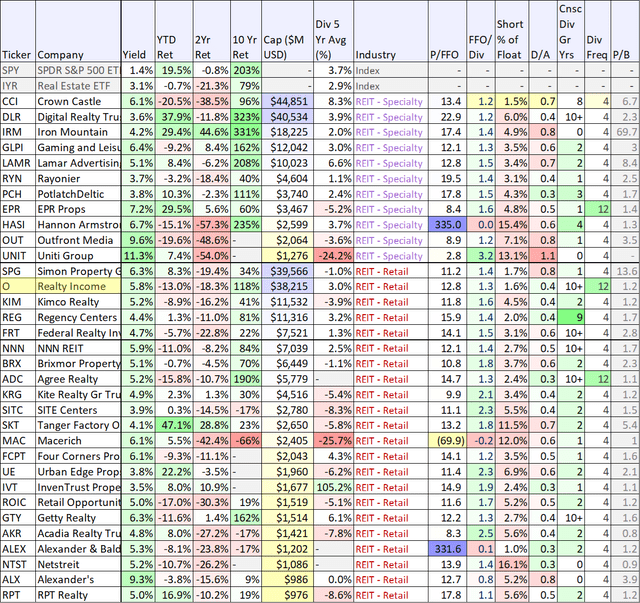
Stock Rover
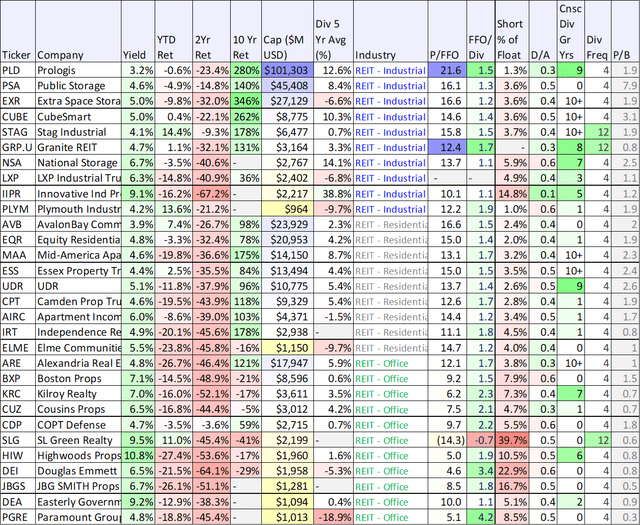
Stock Rover

Stock Rover
(CCI) (DLR) (IRM) (SPG) (PLD) (STAG) (PLYM) (NLY) (STWD) (AGNC) (WELL) (VTR) (OHI) (MPW) (WPC)
So with that backdrop in mind, let’s get into Realty Income in particular.
Realty Income’s Business Strategy:
Realty Income’s current strategy is based largely on growth though acquisition. And the company will become the fourth largest US REIT in the first quarter of 2024 when its latest very large acquisition (of Spirit Realty(SRC)) is expected to be complete.
The company’s acquisition strategy makes sense for two reasons. First, because of economies of scale and a stronger credit rating than most REITs, Realty Income is able to finance acquisitions at lower costs than competitors. This is a distinct (and valuable) competitive advantage.
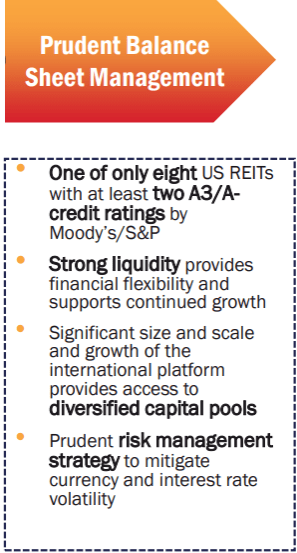
Realty Income Investor Presentationq
Second, the strategy makes sense because the market is highly fragmented, so there are a lot of opportunities for the company to pursue attractive acquisitions.
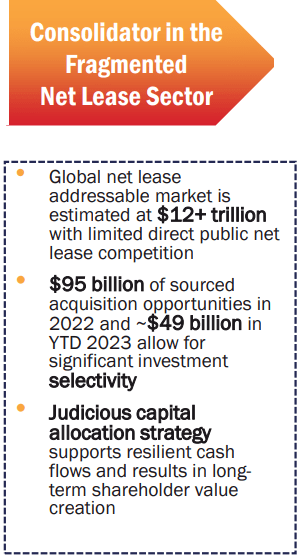
Realty Income Investor Presentation
Current Macro Environment
Unless you’ve been living under a rock, you know that interest rates have climbed significantly higher over the two years (as the fed battles high inflation). Higher rates create problems for property owners simply because the ongoing cost to finance property purchases (and refinance existing loans when they mature) increases, in some cases to the point where it’s no longer profitable for investors to finance the properties. However, Realty Income has a lower cost of capital (as described above), thereby giving it a distinct advantage over other REITs. Further, Realty Income’s “net lease” strategy positions it better than others to deal with rising rates.

Realty Income Investor Presentation
Secular Changes in Retail Real Estate
Another big factor impacting REITs is secular change. For example, the internet has obviously changed the landscape for retail REITs (because consumers buy a lot more things online). Realty Income owns mainly retail properties, and even though the company pursues opportunities that are less impacted by internet retail, Realty Income is still impacted. However, given the types of properties Realty Income owns, they are in a better position than many other REITs.
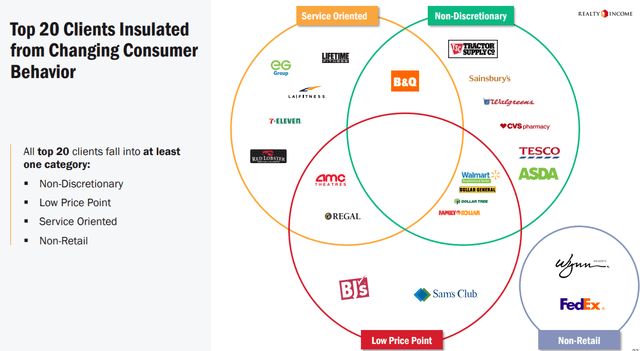
Realty Income Investor Presentation
Dividend Safety
One big reason investors love Realty Income is because they trust the steady growing monthly dividend.
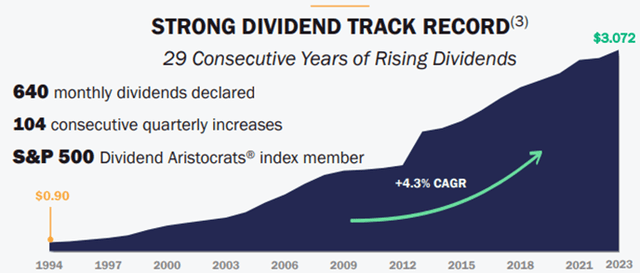
Realty Income Investor Presentation
From a dividend safety standpoint, the current quarterly dividend (on a forward basis) is $0.77 per share. And this compares favorably to Realty Income’s Funds From Operations (“FFO”) of $1.04 per share (i.e. the dividend is well covered). The dividend is also well covered as compared to Adjusted FFO of $1.02 per share. Also important to note, AFFO has growth fairly consistently over time (i.e. a good thing) as you can see in the following chart.

Realty Income Investor Presentation
Valuation
From a valuation standpoint, Realty Income recently trades at 12.8 times AFFO, which is low by its own historical standards. As you can see in the following chart, the share price has come down recently (contributing to the lower P/AFFO ratio) while the FFO remains healthy.
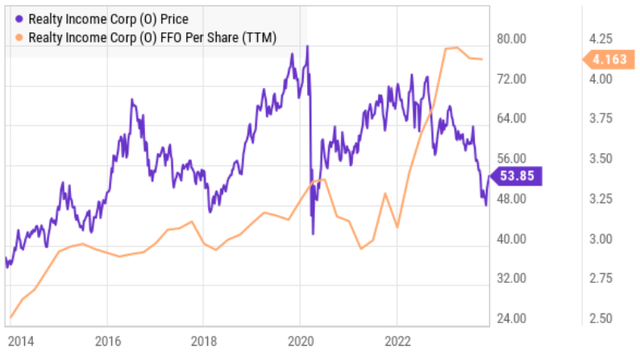
YCharts
Also noteworthy from a valuation standpoint is that Realty Income currently offers a dividend yield of nearly 6% (high by historical standards, as compared to the long-term target of 4-5%).

Realty Income Investor Presentation
We view the high dividend yield as a signal from management that they believe the shares are undervalued, and if/when the share price rises, the dividend yield will mathematically fall to more normal levels, as per history.
Risks
Rising interest rates present a risk for the entire real estate industry. For example, as described earlier, as rates rise it becomes more expensive (and more challenging) to profitably invest in real estate. In some regards, Realty Income is in better shape than peers (because of economies of scale, a strong balance sheet, and lower borrowing costs), however eventually Realty Income will have already acquired all the low hanging fruit competitors (and growth will become more challenging).

Realty Income Investor Presentation
Sales-Leasebacks are a growing trend in the industry where Realty Income is a beneficiary. For example, property owners who can no longer afford the interest costs on their properties can sell to Realty Income to get some instant liquidity/cash, and then lease the properties back from Realty income. This is a good temporary fix, but also an indication of longer-term challenges for the real estate sector.

Realty Income Investor Presentation
Overconfidence: Another big risk could be investor (and management) over-confidence. For example, throughout the latest quarterly earnings presentation, management frequently references the company’s strong historical performance. But of course, past performance is not a guarantee of future success. And investors often also cite past performance, which can lead to over confidence in the future and ultimately poor results.
Retail Concentration: Further still, Realty Income’s concentration in retail properties (albeit many of the most attractive retail properties) still presents some concentration risk. The company has made some efforts to diversify into industrial properties, but industry concentration is still a risk, especially considering the ongoing secular changes to retail, as described earlier.
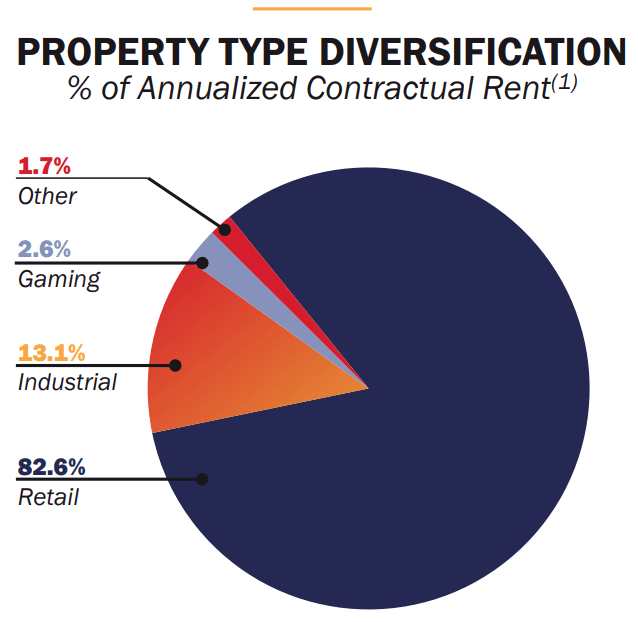
Realty Income Investor Presentation
The Bottom Line
In our view, despite the challenges, Realty Income is an attractive investment for income-focused investors also seeking price appreciation potential. The dividend yield is high (nearly 6.0%) and well covered by AFFO. And the valuation is low by historical standards.
We believe Realty Income’s “growth through acquisition” strategy is prudent, and only the strongest REITs (such as Realty Income) will survive longer-term industry disruption and secular change.
We are currently long shares of Realty Income (in our Income Equity portfolio), and expect the share price and the dividend to both rise in the years ahead. In fact, we’ve ranked Realty Income #10 in our new report, Top 10 Big Yields (behind PDO at #9 and DPG at #7).
Read the full article here








